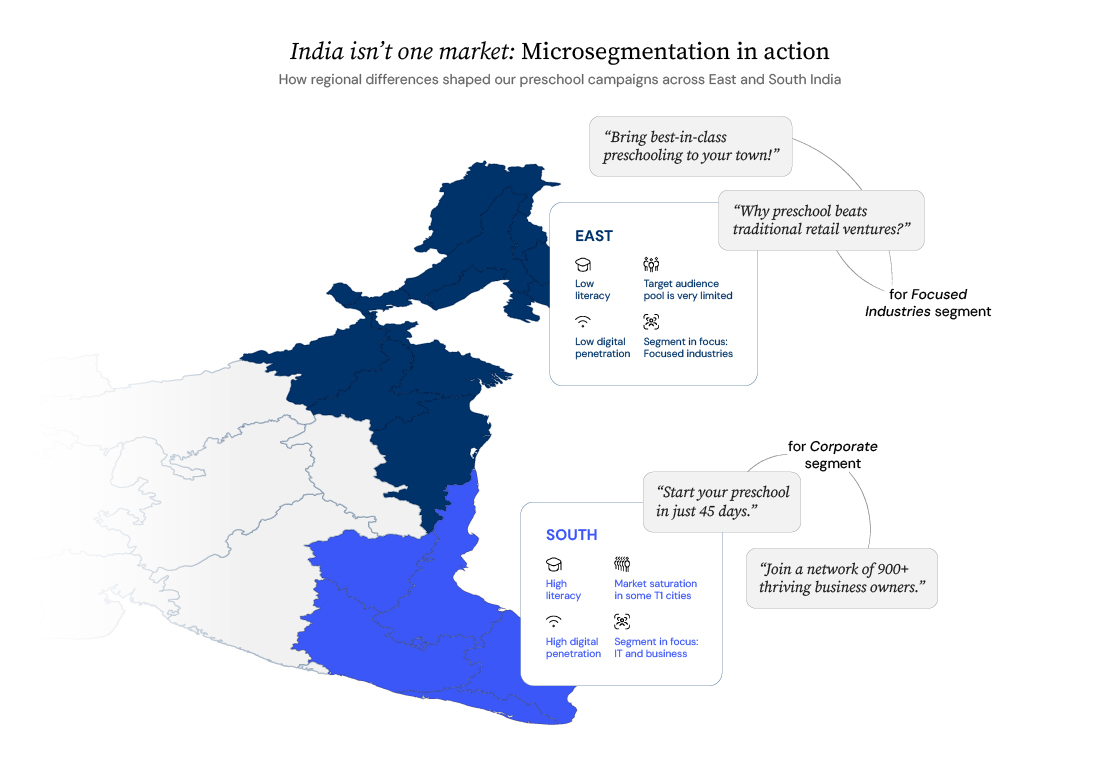Summary
Bottom line up front: The most successful global B2B companies don't have global campaigns—they have global methodologies that create locally relevant campaigns. Your next expansion isn't a marketing challenge—it's a business architecture challenge.
“Our global campaign launched simultaneously in 12 markets. It failed in 11 of them.” This wasn’t a startup’s rookie mistake—it was a Fortune 500 tech company that spent eight months creating what they believed was universally compelling messaging. B2B companies often underestimate how cultural nuances reshape business contexts entirely. The reality hit hard when “digital transformation” meant cutting-edge innovation in Silicon Valley, regulatory compliance in Frankfurt, and relationship-building credibility in Singapore. Same words, entirely different business contexts.
Here’s what we’ve learned from working across markets: the global B2B marketing consistency versus local relevance debate is solving the wrong problem entirely. It’s not about finding balance—it’s about understanding that this choice itself is fundamentally flawed.

The Trust Deficit: When B2B companies face geography-based credibility challenges
When we pitched to prospects in Greece, Bulgaria, and Romania, we discovered something unexpected—an inherent lack of trust in India-based agencies. This international expansion challenge taught us that credibility isn’t universal; it’s culturally constructed.
We had to make everything real. From photos of our actual employees in decks to establishing credentials and references early in pitches. We brought complete transparency to everything we did, including not using virtual backgrounds in video conference calls. The lesson? Sometimes trust isn’t about your work quality—it’s about overcoming preconceived geographical biases through radical transparency and cultural intelligence.
When B2B companies encounter regulatory constraints
For a health company based in Singapore, we encountered massive advertising restrictions based on prevalent laws. Traditional marketing approaches simply wouldn’t work. This forced us to innovate with content assets that spoke to the day-to-day lives of average Singaporean women rather than direct product promotion.
The experience showed us that regulatory constraints aren’t barriers—they’re forcing functions for creative brand localization solutions that often resonate more authentically with local audiences.
The decision-making architecture that matters
Cultural nuances shape how business decisions are made in ways that go far beyond surface-level preferences. Here’s what we’ve learned:
Japanese Markets: Hierarchy drives everything. We discovered that buyer-persona strategies need careful weaving to respect organizational hierarchies. Bypassing the wrong person in the decision chain can kill deals before they start.
European Markets (Greece, Bulgaria, Romania): Trust validation comes first, technical capabilities second. Decision cycles extend not because of bureaucracy, but because of relationship verification processes.
US Markets: Even within the same country, expectations vary dramatically. East Coast clients expect enterprise-level formality and proven methodologies. West Coast prospects gravitate toward innovation, disruption, and startup-style agility.
Asian Markets: Long-term partnership potential often trumps immediate ROI calculations. Patience in relationship-building phases directly correlates with deal closure rates.
The Tonality trap: When your voice betrays your geography
For a France-based accelerator focused on sustainable mobility startups, we ran what we thought was a global campaign. The leads we received were predominantly from India and the Middle East. After analysis, we discovered the copy and tonality was distinctly Indian—our own cultural lens had unconsciously shaped the messaging.
We saw a significant spike in leads from Europe and the US once we adjusted for region-specific tonality. The same value proposition, but expressed through different cultural communication patterns, yielded completely different audience responses.
This taught us that cultural adaptation goes deeper than translation—it requires fundamentally rethinking how ideas are expressed and received across different cultural contexts.

Micro segmentation: The India experiment
For a large preschool franchise in India, we achieved 10x performance improvement in their Meta and Google campaigns by micro segmenting regions across East and South India based on cultural preferences. What worked in Bangalore failed in Kolkata. What resonated in Chennai missed the mark in Mumbai.
The breakthrough came when we stopped treating “India” as a single market and started treating it as a collection of distinct cultural regions with different values, communication styles, and decision-making processes. This approach dramatically improved market penetration across each microsegment.
The framework that emerged: Don’t just adapt globally—adapt locally within each geography you enter.
What we’ve learned: The real global marketing challenge
It’s not about being everywhere—it’s about being relevant somewhere. After working across markets from Singapore’s regulated health sector to Japan’s hierarchy-driven enterprises, from Greece’s trust-skeptical businesses to India’s culturally diverse regions, we’ve learned that successful global marketing requires three fundamental shifts:
- Radical transparency over perfection: Sometimes trust trumps polish, especially when geographic biases exist.
- Cultural fluency over translation: Your message’s tonality reveals your cultural lens—and audiences notice.
- Micro segmentation over market-level thinking: Even within countries, cultural nuances demand granular approaches.
Key Takeaways
The bottom line: Your next global expansion isn't a marketing challenge—it's a business architecture challenge. Are you building campaigns or building systems that create locally resonant campaigns? Because in B2B marketing, cultural relevance wins every time.






